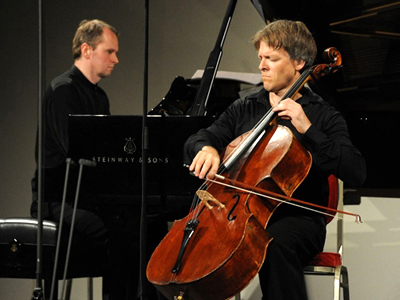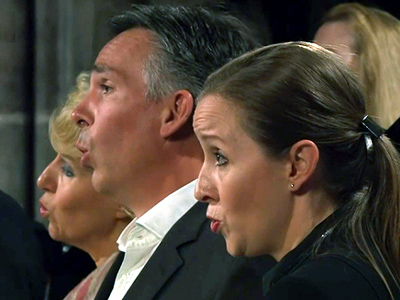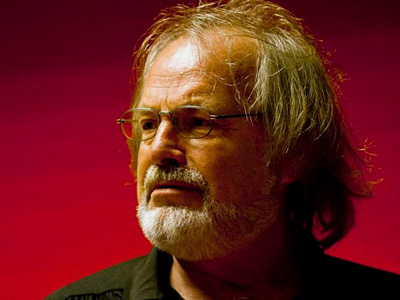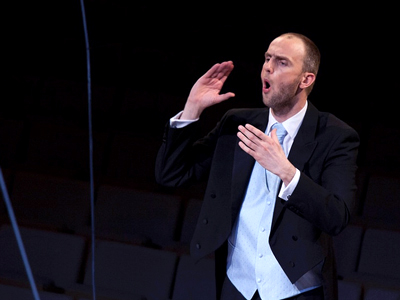By Alan Gilbert
I’ve recently tried my hand at acrylic painting, and just bought a how-to book that stresses the overriding importance of composition — i.e. form and the use of spatial elements — in a successful work of art. By that measure, I can tell you right now that this blog entry will not be successful, since for my return to this space after a series of hopelessly sporadic postings, for which I apologize and beg your indulgence, I anticipate a random series of thoughts and musings.
At the moment I am looking out the window of my sister’s sun-drenched apartment in Lyon, France. This is undoubtedly one of the great gastronomic capitals of the world, and I am looking forward to a great meal tonight at Mère Brazier with Chef Mathieu Viannay, a restaurant I’ve long wanted to try.
Last night we ate at Yomogi, a hugely popular Japanese noodle bar, of which my sister is a part-owner. I think this is very cool — in addition to being concertmaster of the Orchestre National de Lyon, Jenny followed through on a dream we have talked about for years: she actually opened a restaurant in Lyon, a city where half of all new food establishments close after six months. Yomogi just celebrated its first birthday, and from the quality of the food (the gyoza were particularly yummy) and the good vibe I experienced, it looks as if they are in for a good run.
Yomogi is going through some changes in staff, and it was interesting to observe Jenny interacting with the people she manages. In many ways the analogy of a restaurant to an orchestra could not be more apt: both rely on goodwill and effective teamwork, and when these elements are in place and functioning well, both are better able to please and fulfill their customers. I was also struck by the behind-the-scenes dimension (planning for renovation of the ventilation system, hiring new cooks, mediating tensions between the workers) that reminded me uncannily of experiences I’ve had with orchestras.
I was able to make this quick two-day jaunt to Lyon because I am between two performances with the Munich Philharmonic. The first concert was yesterday at 11:00 a.m. on Sunday, and the other is not until Tuesday evening. Jenny has left to hear a contrabass audition for her orchestra, and as I sit here alone in her flat, it feels like the first real breather I’ve had since early September (not to mention the first chance I’ve had to address my blogging responsibilities!).
That month was insane for the New York Philharmonic — many members told me that they could not remember a period in which they played so much repertoire under such intense conditions. The season opened with three wonderful programs that included Mahler’s Resurrection Symphony, an important premiere by John Corigliano, and Frank Peter Zimmermann’s first concerts in his season as our Artist-in-Residence. Frank Peter really wanted his first appearance this year to underline the collaborative spirit he likes to feel, and so the first piece on the program, preceding his magnificent reading of the Berg Concerto, was the Bach Double Concerto for two violins, for which I joined him as the other violin soloist.
Before the subscription season proper even began, the Philharmonic was already in full swing: working backwards, we had Opening Night, with the incredible Deborah Voigt in great voice; a memorable Henry V by Walton, with Christopher Plummer’s profound Shakespearean presence; and A Concert for New York on September 10th, marking the 10th anniversary of 9/11. And if this were not enough, the Orchestra also played the fiendishly difficult sound track to Bernstein’s West Side Story with the film projected live in Avery Fisher Hall, and a few days later I joined them for by an outdoor extravaganza in Central Park with Andrea Bocelli, Bryn Terfel, Tony Bennett, and Celine Dion.
All in all it was, despite the intensity, a great stretch for the New York Philharmonic: the Orchestra is playing unbelievably well and is truly fulfilling our hopes to be an important cultural force in the U.S. and abroad. During the last few days I have been struck by how many people in Europe have told me that they have been following us on European television and in the news. I think it is fair to say that for many of them the New York Philharmonic is a major icon.
For the moment that feels very far away, though: my pressing concern is what to eat for lunch, knowing that a traditionally heavy Lyonnais meal awaits tonight. See you soon!
(For more information on Alan Gilbert and the New York Philharmonic, visit nyphil.org.)



